Be a media and information literate individual in today's digital world.
Don't wanna be here? Send us removal request.
Text
The Good and the Bad: What can the Future Media Provide to the Next Generation?

In these modern times, it cannot be denied that the media has become more popular than ever. The rise of the internet and social media sites has paved the way for media to its popularity and the increase of its users. Young people today spend at least 6 hours a day browsing on social networks. With that being said, it would be easy to conclude how social media has become such an important part of our lives in these times. But what about the next generation? Would it still be as popular as what it is today? If yes, then what can it provide to the next generation?
THE GOOD SIDES OF SOCIAL MEDIA

Although the popularity of media has us believe that young people’s use of social media is entirely negative, there are still numerous positive aspects to consider. There are educational benefits such as the opportunity to communicate and collaborate with the teachers and classmates for school works and projects, and having access to online resources that help the students learn and succeed in their work. Especially now in this time of the pandemic, where there is a need to shift the educational system from the traditional classroom setting to the online class, these social media sites and applications have greatly helped the students to learn and make things possible despite the unfavorable situation. With the help of these social media sites, young people can be exposed to social events and issues happening within the community. This, in turn, can encourage them to become more involved in their communities and try to make a difference. For instance, several Facebook users have shared their support and involvement for every event and issue such as the COVID-19 pandemic, and for the upcoming 2022 presidential and senatorial election. Many have been encouraged to participate in the protocols and programs in battling COVID-19, and many have also participated in the voting registration whenever they see their friends becoming active with them online. With these being said, it is impossible to deny that social media can help to facilitate educating people and creating political change by disseminating information and mobilizing groups of like-minded people. Previously, teenagers rarely watched or read the news; however, thanks to social media hubs, young people are more informed than ever before, with breaking news frequently released on sites such as Facebook.
THE BAD SIDES OF SOCIAL MEDIA

Young people might not see the negative effects of social media beyond the enjoyment they experience and share with their daily online interactions, the reason why we need to highlight these negative effects as well. Social media and the internet are now everywhere and almost everyone has access or may have been exposed to it. In fact, it’s rare to see an individual who doesn’t have any social media accounts nowadays. Almost everyone gets to have social media accounts and spends so much time browsing. This may result in a serious problem which is addiction. Spending countless hours on social media sites may divert the focus and attention from a particular task. It reduces a person’s motivation level, particularly among teenagers and students. Instead of obtaining the practical knowledge and expertise of everyday life, they rely heavily on technology and the internet. Upon spending countless hours on social media, we may also get disconnected from the real world. We lose our personal relationships with our family friends because instead of spending time with them, we are busy scrolling through our social media accounts. Another negative side of the internet and social media is for the kids who might also get affected by the media sites. Kids might be getting exposed to social sites wherein they might see inappropriate things that are not suitable for them. For instance, some people share photos of violence and sex which will greatly affect kids’ and teenagers’ behavior. It could possibly result in the involvement of the kids and teenagers in crime-related activities. Sharing too much information is also one of the downsides of social media. People tend to expose too much information about themselves which can be threatening to them. Despite the tight security system of these sites, there is still a possibility that it may leak. In other cases, other people may use your photos and personal information and use it as their own. This is the reason why we should always be careful in posting information on social media sites. In this way, we will be able to prevent causing harm to ourselves as well as other people.

Social media will not go anywhere, but rather to the immediate future. Therefore, it is very important to educate young individuals on how to properly navigate and use them. In time, newer innovations will take place and will eventually replace what we have today. The means of disseminating information will then become more digitized than ever as new tools will evolve, as technology becomes more advanced, and as consumers make new demands. The future media of the next generations are still full of uncertainties, and all we have to do is to be prepared for what might bring us.
REFERENCES:
https://www.techbead.com/positive-and-negative-effects-of-social-media-on-society/
https://www.be-utd.org/social_media_influence.html
https://www.jennsblahblahblog.com/amp/positive-effects-of-social-media-on-teenagers-communication-skills/
https://dribbble.com/shots/6986914-Social-Drugs
https://www.campaignlive.co.uk/article/media-agency-future-will-no-boundaries/1663086
0 notes
Text
Copy Right and Intellectual Property: How do I protect it as a Young Individual?
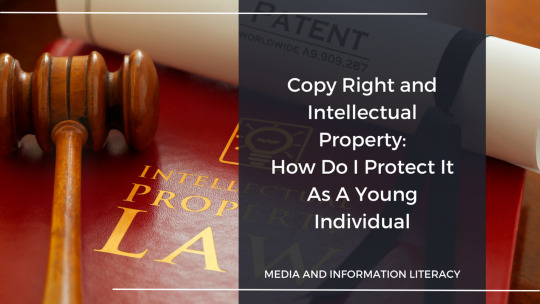
As a student, we have all been exposed into writing a research paper in one way or another. When you write the final draft in your paper, have you ever asked and wondered why we need to include the list of sources and studies that support our claims? Did you ever question why that is required?
Information about anything that we can think of is present anytime and anywhere in this modern digital world. From our peers, books, and personal computers, we all have been updated to the happenings and events around us. Many tend to rely with these insane amounts of information for their day-to-day activities, which can be highly beneficial in this fast-paced society. All of this information can actually be believed by many, however, not every bit of information that we come across with is factual and dependable.
In today’s modern times where information is easily accessible to the majority, copyright strikes and other intellectual property issues are more rampant and present among many individuals. This is more evident here in the Philippines, as many of our Filipino youths are into social media and the internet in general. Even if sometimes it goes unnoticed when we make an assignment, project, presentation and other creative outputs that uses the information, design, claims, and even ideas from other people to support our stand, copyright and intellectual property is always pertinent.
We don’t want to make an innovation out of our own idea and someone gets all the credit, right? This is where intellectual property takes place. But what exactly is Intellectual Property, and how do we, as young individuals of today’s society, benefit from it?
Intellectual Property
Intellectual property (IP) is a general term of a set of properties which includes human intellect’s intangible creations. This includes artistic designs, names, symbols, literary piece and even images that are used by the owners and is legally protected from exterior use or use without permission. There are also types of IP’s that is recognized, and some of these are patents, trademarks, database, and copyright.
These imposed regulations have been used globally for many years by a lot of companies, public and private sectors, and even individuals. However, as the rise of the internet continues to digitize our work, business, education, and the academe, protecting and enforcing these rules are already considered quite of a challenge to many, especially online. The mere fact that information can be spread digitally with just a few clicks, accessed with ease despite security and privacy mitigations, and distributed and claimed by many as if it were theirs show how vulnerable the copyrighted materials are. Not only that, many original authors and creators are not cited for their own work, plagiarizing and imitating them with no credit given at all.
Here are the different types of intellectual properties that guarantee the creators’ rights, and how we, as young individuals, can find a way to limit these issues from happening:
1. Copyright

One of the types of Intellectual Property is copyright. It is a protection given to the creator of an original work, and is a legal right that protects the original works of authorship and provide the exclusive usage and distribution of the owner of his/her creation. In general, there is a time limit in copyright. To expand this time limit, a creation will have a copyright protection from the day it was established until the death of the author, plus seventy (70) years from its lifetime. After those years, it will no longer have a copyright protection and can be used by anyone without the need to cite its author, unless a copyright is renewed or given to another person or entity. The books you use, the songs you sing, the movies that you watch, the artworks that you are making, and even the photos that you are taking, are some of the common examples that copyright can be enforced to and used.
This is where citations also come into play. We need to cite sources for us to review their work thoroughly and verify their reliability. Citing our references allow us and our readers to know the process and intake of information from various publications, giving us a way to ascertain its trueness and to identify easily if its false. On top of that, citing sources in our researches allow us to give credit to the people who have made our works possible and stop us from plagiarizing their content. Not to mention, that information we used for our own publication has been given loads of time by their researchers and original authors, enough reason for us to address and acknowledge these people and their contributions to the development of our understanding and knowledge.
There is also what we call the “Fair Use Policy” under copyright. This is a principle which states that under certain circumstances, any information can be used without the need to ask for permission to the owners of the information. This means that you can have the freedom to express and use some commodities just like reporting this as a news, teaching, criticism, and research. This can be commonly seen on most of the things in our phones like games, or even the reaction vlogs that we see on YouTube. In order to not be prone to copyright issues, there is also one way that is much applicable especially when you are much more involved in writing, and that is “paraphrasing”. You should not directly copy and then pasting everything from your source; instead, you should revise the construction of the statement without changing the thought and message of it, giving yourself a chance to further explain that idea in your own original words.
2. Patents

Another way to protect your intellectual property is through patents. If creative pieces are covered by copyright protection, patent protection is responsible for inventions. This includes new machines, new materials, and new combinations or modifications. These are also of importance since the things that are covered with this type of intellectual property are valuable to our everyday life. These innovations, technologies, and new machineries actually helps most people live with convenience. Take the Apple Inc. for example, Steve Jobs, the creator of Apple Inc, was actually protected by this type of intellectual property, giving the company the right to sell Apple products exclusively to the market.
People tend to buy and trust products that are patented due to the credibility that comes directly from the inventors or manufacturers themselves. In relation to the Apple Inc., this allowed them to reach sales far beyond others, as people knows and only buys Apple products that they know are manufactured by the original company. Patents generally offers intellectual protection with a validity of 20 years.
3. Trademark

Whether you work for an organization or you are making your own artworks, a good way to deliver uniqueness in your own works is to establish your own trademark, which is also referred to as “branding”. This includes making your own logo, creating your own color scheme or palette, deciding on a font style, and applying all of these in the posters or advertisements that your client or company is publicizing. Take Jollibee and McDonald’s for example; since they both are widely known globally, a lot of people have already set their eyes and know that those belong to their respective companies. In this way, the audience can easily distinguish your brand apart from others, and given that people already know your branding, the chances of it being stolen by other people and taking credit from it will be lesser.
Trademarks are commonly found in large businesses and establishments, however, these can also be used by smaller enterprises to their own liking and preference.
4. Trade Secrets

Trade Secrets is another way of protecting our intellectual property. Although this is commonly used in the business setting, however it can still be applicable by students and in school matters. It is generally a protection used against unfair competition or is based on specific resources, which comprises formulas, patterns, and processes. This type of intellectual property protection is actually associated with the trademark protection, since this also tackles about a brand’s formula, but in trade secret, it is specifically for the things that is exclusive to the firm and not publicly shown. One example of this is the Caldera’s Pizza, all we know is its appearance and taste, but there is a concept of the “secret ingredient” of which the public doesn’t know about. This is one way to preserve and protect one’s intellectual property and keep it from being revealed to the public.
There are many other ways on how to protect your intellectual property, but the aforementioned techniques are the most common and applicable ways that many of our young generations can remember to utilize later on.
Keep in mind that in the digital era where information is highly accessible by everyone, we must practice caution and be careful on what we put out there, remembering the practice of professionalism and rationality above all things every time we scroll and post something online. Infringing the intellectual properties of others is not just illegal, it also an unethical practice that we must always avoid to do. We must always be reminded that as students, we must also take part in protecting our personal data, and thus, we must not steal anything that is not ours, because even if that can be seen as a minor issue to some, it is still an issue regarding someone’s right and is therefore a punishable offense as stated by law.
As students in the university, we have our responsibilities in executing and practicing the correct use of intellectual properties in our academic works. As responsible citizens, we must also take part in reducing the rate of IP infringement in both online and offline communities. And, as concerned individuals, we must educate and inform others about the importance of IP and how we can stop ourselves from committing further violations against it.
We must bear in mind that as future professionals, we must give credit where credit is due.
REFERENCES:
https://info.vethanlaw.com/blog/2015/10/what-is-the-difference-between-copyright-and-intellectual-property
https://smartblogger.com/how-to-write-a-blog-post/
https://www.shopify.com.ph/blog/blog-examples
https://www.libraries.rutgers.edu/research-tools-and-services/copyright-guidance/copyright-students
https://www.legalzoom.com/articles/how-to-protect-your-intellectual-property
https://www.wipo.int/tradesecrets/en/
0 notes
Text
Unfolding the Bitter Truth: The Dark Side of Media and Technology

Learning the truth will set you free from guilt and provide you with a sense of relief.
Everything in our world has flaws and shortcomings that we try to detest and ignore. We may notice and disregard them, concentrating instead on the positive aspects of what we are looking at. The media is not immune to this way of thinking. We have concentrated on the breakthroughs, inventions, and current developments that have resulted in the overall improvement of our lives as a result of technical and sociological changes we have seen and experienced in recent years. However, are these really all that has developed? What about the disadvantages of these disparate technologies? Is our digital world really as secure as was claimed when it was launched?
Today, media is ingrained in our lives, and as constant users of media, it is critical that we analyze both sides of the coin, emphasizing the sometimes overlooked occasions in which media might be regarded as darker than it seems.
Nowadays, the media plays an important role for people, may it be as a form of communication or as an app to pass time. While it has its own benefits, it is an important reminder to ourselves that these innovations will never be a replacement for real-world human connection. The different media sources provide people with news and information that assists them in making educated decisions, establishing democratic control and power, and rooting out corruption and mismanagement of public resources. The use of mobile phones and internet access is becoming more common. It has brought the media’s promise to the doorsteps of communities around the world. However, the dark side of media and technology—digital drama and unexpected repercussions for customers, brands, and enterprises, among other things—must not be disregarded by the public and should be explored more often with a deeper understanding.

Unintended consequences are most commonly made by the consumers and users of media. One infamous example is the suicides and murders broadcasted via Facebook Live. The platform for social media was used for this kind of tragedies and it created a new kind of audience of live behavior that can go viral quickly. There are many social risks inherent with live social media, and the new generation is more prone and exposed to these. One example of this is the live broadcasting suicide of Ronnie McNutt. During his live, he was talking about suicide and arguing with people who were trying to comfort him. At some point, police arrived at his house, at which he decided to take his own life. More than 200 people were watching and people started to upload videos of his suicide the next day. This extreme event shows the great extent of how social media can greatly influence one’s thinking ability and decision-making.

Digital drama is the prevalence of unpleasant internet behavior such as cyberbullying, revenge pornography, trolling, and other associated online events. Texting was the most common way to do this before, but social media, with its large audience, high degree of interactivity, and ability to broadcast live video, is quickly taking over as the primary venue for this kind of negative and degrading communication. Many people tend to bash and judge certain individuals on what they post and upload to their social media accounts, may it be their personal looks, comments, or ideologies. Celebrities, politicians, and influencers are some of the primary targets of these ‘cancel culture’. To some it may just be fine and a thing to laugh at. However, some may take it seriously, damaging their self-confidence and leaving them in an anxious and depressed state. The death of Gabriella Green, a middle school girl in Florida, as a result of the cyberbullying of two 12-year-olds, is one such case.
Moreover, certain instances of digital drama, especially those cases in cyberbullying and revenge, may result to hacking and stealing of private information. Both a person’s dignity and personal identity can be ruined in an instant in this digitized world, especially that social media can be used in this manner to ruin people’s career and lives.

A common thread in all of this is privacy. Ever since the birth of information age, the sharing collection and use of personal data have grown rapidly, with an ever-increasing amount collected from a number of new and evolving sources.
This is the dark side of the media.
It comes in various forms and it may stay below the surface and spread like a viral infection. And then, all of a sudden it can take root like cancer. The dark side of media takes away the rights of the people to right and factual information; it whips out passion with misleading distortions or outright lies, hinders economic renewal, and may trigger violence and war. Today, the dark side of media is raging across many regions, such as Eastern Europe where propaganda is a frontline tool of influence and conflict.

Such propaganda can be seen by the spread of false information in various media platforms. It is no longer a surprise to many of us that certain posts may contain outright lies or fabricated stories to intensify anger, suspicion, rage, disbelief, and hatred towards a person, group, or community; posts that may spark division instead of unity among people.
False information in different media is not a local issue. In fact, it is like a global epidemic. It is a disease - a manipulative disorder. The spread of this falsified facts and data makes anyone question, “Can social media (or the internet) still reliable to scroll through and read?” Truly, this dark side of media can start confusion and devalue its important use and benefits for us in this modern times, especially if it attracts popular interest. A prime target for the spread of this false information is during election seasons, international summits, and civic movements.
May it be accidental misinformation, slanderous disinformation, or misleading mal-information, this information disorder continues to create chaos and doubt among media users. We might not be able to stop its continuous progression entirely, but we have the power to become a media literate individual and deter from lies and stick to the reality and the truth.

Even highly motivated, reform-minded governments find it difficult to fix broken media systems. These ecosystems are characterized by significant economic and political forces with vested interests. For the same reason, these systems present a unique challenge to the international media development community, which has long assumed that improving media systems can be accomplished by a combination of technical assistance, training, and other sector-level interventions.
Digital technology has provided us with luxuries and conveniences that were unimaginable just a generation ago. The digital era has so many wonders that scholars Erik Brynjolfsson and Andre McAfee dubbed it "The Second Machine Age," claiming that computers are doing for our brain capacity what the steam engine did for muscle power. But for every progress there will always be drawbacks. Some critics of the digital era worry that the power of large social media platforms could shape public opinion. Others express concerns about issues such as cyberbullying and internet pornography. There are also others who are concerned about the possible loss of privacy and the threat to civil liberties at a time where nearly every movement, phone conversation, and email message leaves a digital trail that can be exploited by a nosy neighbor or an overbearing government.

While these are all valid issues, quantifying them is impossible. However, as we give prominence to these problems present within media, people, like us, can now do something in order to mitigate its further spread, influence, and impact to ourselves and others. An important aspect we need to consider is responsibility. As consumers of various media on a day-to-day basis, it is essential for us to know what we are doing online. Whenever you see any false articles, report it. If you see something malicious (links, spams, junk messages), delete or ignore it. Lastly, educate the others who may not be familiar with all of the risks and downsides of the digital world. If we cooperate together, the threats and harm posed upon by these bitter and dark sides of media may finally become a thing of the past.
“As we continue to use media and technology on a daily basis, we need to be more aware of what we post, share and read in different digital platforms. Media is not perfect; however, it is up to us to be the better man and be more educated and literate in using it.”
The Dark Side of Media, in a nutshell:
1. Unintended consequences
2. Digital drama
3. Hacking and malicious attacks
4. Loss of privacy and risks of security
5. Information Disorder
REFERENCES:
https://www.helpguide.org/articles/mental-health/social-media-and-mental-health.htm.
https://news.utexas.edu/2017/06/01/we-all-need-to-be-aware-of-the-dark-side-of-social-media/.
https://www.dw.com/downloads/28543632/considering-the-dark-side-of-the-media-pdf.pdf
https://www.thescottishsun.co.uk/news/6017742/tiktok-suicide-video-ronnie-mcnutt-app-shooting/
https://www.bbc.com/news/technology-54176205
https://www.news5cleveland.com/news/two-12-year-olds-arrested-for-cyberbullying-before-girls-suicide
https://www.imf.org/external/pubs/ft/fandd/2016/09/wellisz.htm
https://www.thesun.co.uk/wp-content/uploads/2020/09/Capture-29.jpg
https://s3-us-east-2.amazonaws.com/maryville/wp-content/uploads/2020/05/28102406/BSMKT-Q4-Skyscraper-1-The-Evolution-of-Social-Media-How-it-Started-Where-Could-It-Go-Next-G-header-v2.jpg
https://oasmiles.com/wp-content/uploads/2020/10/OA_Blog-84.jpg
https://209859-635214-1-raikfcquaxqncofqfm.stackpathdns.com/wp-content/uploads/2018/09/digital-ecosystem_Tavola-disegno-1-1024x600.jpg
0 notes
Text
“Delivering News in the Present Age”

A million views on YouTube,
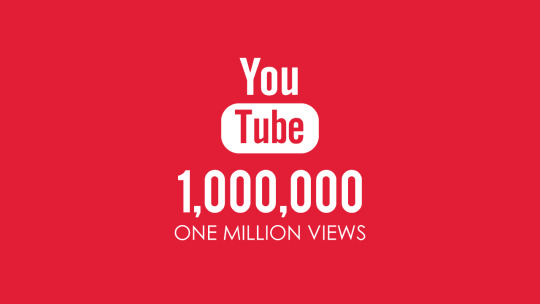
A hundred thousand likes, comments, and shares on Facebook,

A thousand retweets on Twitter,

And,
One point seven billion articles in Google.
It is undeniable that news nowadays has become a vital factor in our day-to-day lives. Through news, we are continuously aware of what is happening around us, both in our locality and around the world. Accordingly, by being updated on the current issues our society is facing right now, we, as citizens, can participate, speak, and express our opinions and sentiments on these topics more rationally and with deeper understanding. It is through the news that we become more empowered individuals.
Now, for those who are involved in the pursuit of journalism and news, can they continue delivering factual and relevant information to the people even with the increasing influence of technology and the internet? Will they be able to do it while not falling prey to the rise of false information that amplifies the division of people nowadays?
To answer these questions, we need to understand first how news is presented, shared, and accepted in this modernized and digitalized age.
The word "News." What comes into your mind when you see or hear this word? Is it the one that you see or hear on your radio or TV every morning, afternoon, and evening? Or, is it when you see a story on your social media and the internet about your favorite person, thing, or place?
What is News?
According to the Merriam-Webster dictionary,
News is an information about a recently changed situation or event.
It can be published in newspapers,

broadcasted on radio and television,

seen or searched in the Internet,

And, with the rise of social media,
It can be shared easily on any popular media platforms.

News is an important aspect of communication that keeps us informed and updated on recent events and issues worldwide. With the advent of technology, accessing news is easier than ever before. Though it can be entertaining and comical sometimes, the paramount purpose of news is to be a tool to empower and educate people with factual information. This has been the primary reason for its continuous development and influence on people of all ages.
How did news come into existence?
News started by the process of journalism.

Journalism is described as the collection, preparation, and dissemination of news, associated analysis, and feature content via print and electronic media. Through journalism, people are provided with the adequate and relevant information that greatly helps in formulating their decisions involving themselves, their community, and even the entire world.
When did journalism, and consequentially, news, actually originate?
The Acta Diurna, a news sheet circulating in ancient Rome, is thought to originate from before 59 BCE. It was the earliest known journalistic product, and it documented significant everyday occurrences such as public addresses. It was published regularly and shown prominently in public places.

During the Tang dynasty in China, a court circular known as bao, or "report," was being sent to government officials. This gazette was published in different formats and under numerous names until the end of the Qing dynasty in 1911.

Around 1609, the first regularly published newspapers appeared in German towns like Antwerp. The Weekly Newes, the earliest English newspaper, was printed in 1622.

The Daily Courant, which was one of the first daily newspapers, debuted in 1702.

Magazines, which began as academic journals in the 17th century, began to contain opinionated articles on current events, such as those published in the Tatler (1709–11) and the Spectator (1711–12).

The emergence and development of the telegraph, followed by the rise of radio and television, greatly expanded the reach and timeliness of journalistic work, providing massive new outlets and reaching more audiences for their electronically disseminated articles and headlines. Satellites, and subsequently the Internet, were then utilized for long-distance broadcasts of journalistic material in the late twentieth century and are continued to be used worldwide even until now.
The New News of the 21st Century

Media, in general, is in a constant period of change. The news industry is no different. In fact, its transformation from the traditional conventions of news delivery to the ones we are familiar with right now has developed a huge gap in terms of its impact, influence, and accessibility to ordinary people. Similar to how the young generation nowadays has adapted to the new norms of life, news as a whole has also changed in response to the technological innovations we have accomplished.
Today’s news is a far cry from what it once was. Previously, you receive most of your news and information from your local newspaper, which was only published and delivered every morning. Newspapers are still around today, but they are already overlooked by several alternative yet faster news sources, like radio and TV news programs and social media. Moreover. we no longer have to wait an entire day for us to hear the news because of the Internet; rather, we only have to wait just a few seconds.
Traditionally, ordinary people, like us, cannot easily influence the production of news. Citizens before were simply consumers and readers of information. Back then, there were only a handful of scholars and journalists assigned to research and disseminate relevant information for the public to read. Sending a letter to the editor was the only way for people to show their concern or interest in a particular article or event. However, at this present time, ordinary citizens like us can now become journalists ourselves. For instance, we can already become active players in producing and sharing news through the posts and comments we create and share on social media platforms like Facebook and Twitter, which we can do instantaneously and anonymously. With just one simple click, you can spread information faster than ever before, may it be to your family, friends, or the whole web.

The Spread of False Information
Truly, the internet and the social media platforms in it have granted us the immediacy of information other news media cannot reach. However, not all information we can see online is accurate, real, and verified to be true. Some of the news we may see are misinterpreted and misunderstood, while some may perhaps be intentionally made to spread doubts and misinformation. These are collectively referred to as false information, and they pose a threat to the integrity of news and journalism today.

What is False Information?
False information pertains to news, stories, or hoaxes that are structured to misinform and deceive readers, which may be disseminated intentionally or accidentally by people.
False information isn't new, and it has become a major issue in recent years. Traditionally, we obtained our news articles and updates only from reputable sources, journalists, and media outlets that were bound by rigorous ethical standards. However, the internet has provided an entirely new form of publishing, sharing, and consuming information and news, a form with no direct regulation or editorial oversight on what information is to be distributed to the people. Consequently, anyone now has the power to misinform people with stories and articles that are far from the truth.

Many individuals today acquire their news through social media and networking sites, but it can be difficult to ascertain if the stories and articles we read and know are reliable or not. Some people may even believe the stories they see in their feeds and timelines immediately without even verifying if they are legitimate or not. People's general unawareness of how the internet operates and how it can easily be manipulated by everyone has contributed to a rising trend in misleading narratives and hoax articles spreading quickly both in the online world and in real life. Social media sites subsequently play a significant role in increasing the reach of this false information.
What are the common types of false information we see nowadays?
1. Click bait
These are stories that are purposefully made up in order to enhance site traffic and advertising revenue. Click bait articles utilize tendentious headlines to pique readers' interest and draw them in to the publisher's website, where they can read stories articles that are inaccurately written from the real story.

2. Propaganda
These are articles that are designed to intentionally mislead and misguide audiences the public, propagate a biased viewpoint, or endorse a cause or goal by tarnishing the reputation and credibility of the opposition. These are highly common in the field of politics, especially during election seasons.

3. Satire/Parody
Many websites and social media accounts are also being made to produce false news headlines for the purpose of amusement and satire. Despite their goal to entertain people, these still promote disinformation to the public, which may raise confusion to those who may believe it.

4. Sloppy Journalism
Sometimes reporters or journalists may accidentally publish an article with inaccurate information without thoroughly researching all of the facts, which can lead to misinformation.

5. Misleading Headings
Stories that may not be totally false can be altered by employing deceptive or misleading titles. These sorts of stories may swiftly spread on social media platforms, where only headlines and snippets of the entire article are presented in the audience's news feeds.

6. Biased/Slanted News
Many people are inclined in believing news or reports that reinforce and affirm their own ideas or prejudices, and these can be taken advantage of. Based on our individual search histories and activities, social media news feeds tend to display news and items that they believe we would enjoy, and those may contain false information. In fact, people tend to consider even the most reliable news outlets fake when it opposes their beliefs and stand on a particular issue or problem.

Becoming a Responsible Citizen and Netizen in the 21st Century
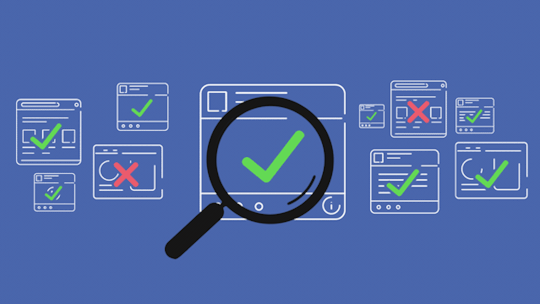
The emergence of the internet as an integral part of our lives has brought significant changes in how we receive and spread information in this modern age. Through the rise of technological innovations such as social media, everything can now be accessed with just a simple click, and that includes the news. With that, we are now constantly updated with everything that is happening around us. Moreover, we, ordinary people, can now become ‘citizen journalists’ as well, having the power to disseminate information to a wider audience through our own posts, discussions, and shares online. Nonetheless, since the internet is open for everyone to access and change anytime, we cannot ensure that everything that is being published is factual and truthful. False information is everywhere, may it be online or offline. And, it is up to us to stop its further growth and influence on people.
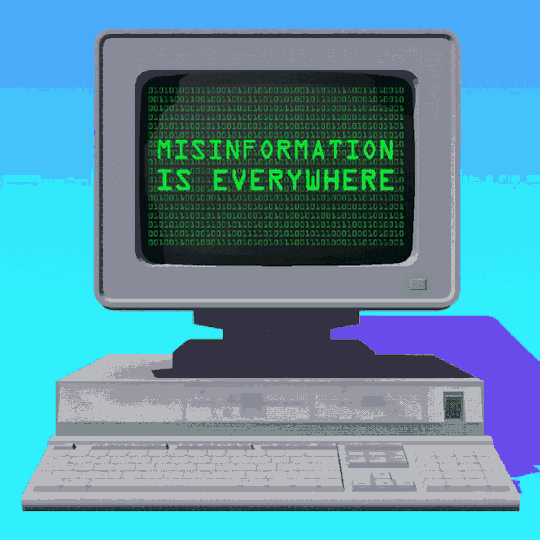
By being young journalists in this era of citizen journalism, we should always be knowledgeable on the things we are posting and sharing online. It is our responsibility to hinder the spread of misinformation and disinformation, which may cause disarray and confusion to some. It is highly crucial for us in these times to know how to find and rule out any false information that is being presented as “news”. Remember, always check the source of the articles you are reading on the internet. Are you familiar with the website? Is it a known and reputable news source? If not, then is there any information regarding the credibility of the author? If there are none, the reports presented may not be reliable at all. Moreover, we should always validate any information that we may see from time to time. Fact-checking and reaffirming their truthfulness and accuracy never hurt anyone; so always do that before sharing anything, especially news articles and stories, with anyone.
As the world continues to progress and modernize, the way we communicate information and news will one day change again. Unfortunately, false information is still unlikely to disappear soon. However, we have the power to minimize it. Continue to spread and deliver truth and awareness to everyone. These are the things that every people must have in their lives.

As responsible journalists and citizens of the 21st century, always remember to voice out what is true and real. Never let the fallacies and lies of the dishonest and corrupt lead the nation and the entire world. That way, we can help not only ourselves and our society but also the future generations that will someday inherit the world we currently live in.

References:
Gingras, R. (2018). News Then, News Now: Journalism in a Digital Age Retrieved from https://richardgingras.medium.com/news-then-news-now-journalism-in-a-digital-age.
Collins Dictionary. (n.d.). Retrieved from https://www.collinsdictionary.com/dictionary/english/news.
Mvorganizing. (n.d.). Retrieved from https://www.mvorganizing.org/what-is-the-importance-of-news/.
Britannica. (n.d.). Retrieved from https://www.britannica.com/topic/journalism
Masters in Communications. (n.d.). Retrieved from https://www.mastersincommunications.org/modern-journalism/.
Webwise. (n.d.). Retrieved from https://www.webwise.ie/teachers/what-is-fake-news/.
Mailchimp. (n.d.). Retrieved from https://mailchimp.com/resources/fake-news-on-social-media/.
Image Sources:
https://gifer.com/en/991p
https://www.spot.ph/newsfeatures/the-latest-news-features/66476/10-satirical-news-sites-a1125-20160530-lfrm
https://www.pinterest.ph/pin/434667801532566874/
https://qph.fs.quoracdn.net/main-qimg
https://www.wwltv.com/article/news/verify/verify-headlines-comparing-coronavirus-spanish-flu-misleading/507-16b40112-04d5-4b6a-9463-2243404977c8
https://tenor.com/search/views-gifs
https://www.canadianmortgagetrends.com/2016/11/sloppy-journalism/
https://dribbble.com/shots/11700268-Online-Video-chat
https://tenor.com/view/misinformation-fake-news-lies-verify-truth-gif-22080004
https://www.wonderwall.sg/health/quelling-false-rumours-about-the-wuhan-coronavirus/
https://imgur.com/A2Lmidq
https://about.fb.com/news/2018/06/hard-questions-fact-checking/
https://media.istockphoto.com/vectors/like-comment-and-share-icon-set-on-a-white-background-modern-flat-vector-id
https://www.fastlykke.com/buy-twitter-retweets.php
https://www.searchenginejournal.com/google-news-becomes-more-personal-and-social
https://www.baltimoresun.com/opinion/op-ed/bs-ed-op-0218-local-newspapers-support
https://www.dreamstime.com/illustration/television-radio.html
https://medium.com/international-online-journalism/the-impact-of-digital-technologies-on-the-gathering-production-and-dissemination-of-news
https://www.reviewsxp.com/blog/best-social-media-sites
https://www.searchenginejournal.com/journalism-tactics-for-seo-content
https://www.akg-images.com/archive
https://www.historyofinformation.com/detail.php
https://www.mediastorehouse.com.au/fine-art-finder/schools/english-school/weekly-news
https://twitter.com/onthisdayshe/status
https://www.impmedia.co.uk/single-post/2017/03/11/new-age-of-journalism-the-tatler-the-spectator-and-the-guardian
https://www.webwise.ie/teachers/what-is-fake-newshttps://www.google.com/url?sa=i&url=https%3A%2F%2Ftenor.com%2Fsearch%2Fviews-gifs&psig=AOvVaw25BlzIv0VeZv0ecwd-T6ma&ust=1633100219187000&source=images&cd=vfe&ved=0CAwQjhxqFwoTCICV48n6pvMCFQAAAAAdAAAAABAJ
1 note
·
View note
Text
“Media Evolution and the Changing World”

What is the clip trying to portray?
Thousands of years ago, before newspapers, television, and smartphones were invented, human ancestors made use of their available resources to communicate with others. According to some experts, prehistoric cave paintings found in different countries like Spain and France were suggested to have been used as a medium for communication during ancient times (Taylor, 2021). The world’s oldest evidence was a painting located at Leang Tedongnge cave in Sulawesi, Indonesia. It was believed to date back to 45,500 years. This evidence shows how media also had its stages of evolution similar to how human beings evolved from Australopithecus to Homo sapiens.
Although early innovations of communication started many years ago, media had become evident as early as the 17th century. It was mainly used for conveying information. As time progressed, people began to desire the idea of sending information, communicating with others, and be entertained and updated on the events that are currently happening to their society. With that, creative minds made those thoughts possible and invented tools. Those inventions made information easier to understand and available to cater to a large audience. The importance of mass communication gave way for rapid development to happen, which constitutes the modern media we now have today.
What is Media?

“Social networks represent the digital reflection of what humans do: We connect and share” – Jeremiyah Owyang
According to Market Business News (2019), media is broadly defined as a channel of communication used to relay news, entertainment, education, data, or promotional messages. Media may be the plural form of medium, but it is widely used as a singular noun in literature and considered as a collective singular. It ranges to different uses depending on the sense intended. For instance, broadcasting media uses newspapers, magazines, TV, and radio to disseminate the information needed by the public. Mail and telephone are mostly used for personal and professional purposes. Thus, it is anything that one can utilize to reach or influence people.
Five Theories of Media Evolution

The history of media is often seen as a tautology. Recorded history itself requires some form of media on which it can be stored and passed along through time.
Marshall McLuhan, a Canadian philosopher, believed that the phonetic alphabet, the printing press, and the telegraph remodeled the world. Because of these creations, the world evolved from one era to another. There are five theories of evolution that shaped the media that we have today.
The Tribal Age
This period is also known as the acoustic era. The tribal village developed and relied on all the human senses, which helped increase their awareness as they lived complex lives that mainly focused on survival. Out of all the senses, the sense of hearing was more valuable to them because it wasn't limited compared to seeing. According to McLuhan, "primitive" people had a more holistic sense of the world due to the value they place on their hearing. This sensory perception, together with the sense of smell, were considered crucial abilities during that era. Moreover, they used sound and spoken words to share their thoughts. Various ideas and messages were passed down orally, and it had to be done constantly to keep them alive.
The Pre-Industrial Age (Pre-1700s)
Unlike the previous era, this age relied on the sense of sight. McLuhan believed that hearing lost its previous value and quality because the sounds which were once needed to send a message were turned into visible objects. Spoken words became actual words written using the alphabet. According to McLuhan, those phonetic alphabets gave rise to the study of mathematics, science, and philosophy in Ancient Greece. Aside from this, people also produced papers using plants, with the papyrus used in Egypt being the major example of this production. Moreover, the first printing press was introduced, which used wooden blocks to print images or texts. These advancements turned tribal villages into "civilized" private detachments.
The Industrial Age (1700s – 1930s)
Information was more available to many people during this age due to the printing press making it widespread. With that, McLuhan considered Gutenberg's invention the forerunner of the industrial revolution. However, he also noticed the unintended effects it brought. For instance, people began to use papers for nationalism and propaganda purposes. Printing, along with steam, was able to produce a medium including newspapers used to spread information to the public and books that had information to be read privately. Moreover, instruments including the telephone (1876), the typewriter (1800), and the telegraph were invented during this era. Film-making has also begun during this age using commercial motion pictures and motion pictures with sound.
The Electronic Age (1930s-1980s)
McLuhan was able to predict that this age gave rise to what is called the global village. Accordingly, it is a place where information can be accessible to everyone everywhere made possible by technology. Thus, long-distance communication became instant. This advancement gave more value to sound and touch rather than the sense of sight once again, which according to him, made us go "back to the future" and become a village. Moreover, this is the age wherein Shockley, Bardeen, and Brattain, in 1947, invented the transistor, which is still utilized up until now. Inventions during this age include television, the radio, large computers, cassette tapes, and compact disks.
The Information Age (1900s – 2000s)
It is also known as Digital Age. It is an era wherein communication and information gathering are the most efficient. The internet and the World Wide Web were introduced and harnessed by people all around the globe. Its introduction in this age altered the electronic environment. It is wholly electronic. However, digital technology always needs to be plugged into a power source. Different social media platforms are becoming the norm in this age. Devices like personal computers, laptops, smartphones, and the gadgets that we have today are invented and are a part of this age. In fact, all people reading this are probably a recipient of this modern era of media.

So, where do we go from here?
From the beginning to the present, it is evident that the world has changed, and media has revolutionized to a great extent. As a digital native, I can’t comprehend the fact that I can survive in an era wherein our ancestors used to send letters that take five months or more to send and another set of months to receive from the recipient. In the present, we can observe that technology has provided so much convenience and access to information. Posting updates, chatting with distant friends, and digesting information can now be done by a single instrument. As crazy as it sounds, we must note that progress is constant whether we are alive or not. With that, we can expect that a new era that caters to a new generation will come, and the constant strive for advancement will never end.
References:·
Taylor, R. (2021). A Short History of Media. Retrieved from https://owlcation.com/humanities/A-Short-History-of-Media
France-Presse, A. (2021). World's 'oldest known cave painting' found in Indonesia. Retrieved from https://www.theguardian.com/science/2021/jan/13/worlds-oldest-known-cave-painting-found-in-indonesia
Market Business News (2019). What is media? Definition and meaning. Retrieved from https://marketbusinessnews.com/financial-glossary/media-definition-meaning/
Griffin, E. (2011). A First Look at Communication Theory 8th Edition. Retrieved from https://www.dawsoncollege.qc.ca/ai/wp-content/uploads/sites/180/16-McLuhan-Media-Ecology.pdf
Oxillo, M. (2017). The Evolution of Traditional to New Media - Media and Information Literacy (MIL). Retrieved from https://www.slideshare.net/markjhonoxillo/the-evolution-of-traditional-to-new-media
Serena, K. (2019). Meet Marshall McLuhan — The Man Who Predicted The Internet. Retrieved from https://allthatsinteresting.com/marshall-mcluhan-global-village
GIF Sources:
https://gifer.com/en/78Mz
https://gifer.com/en/8opi
https://www.pinterest.ph/pin/502573639652959265/
https://gifer.com/en/ENhQ
2 notes
·
View notes
Text
“On Becoming a Medium: Gen Z Individuals as Modern Communicators”
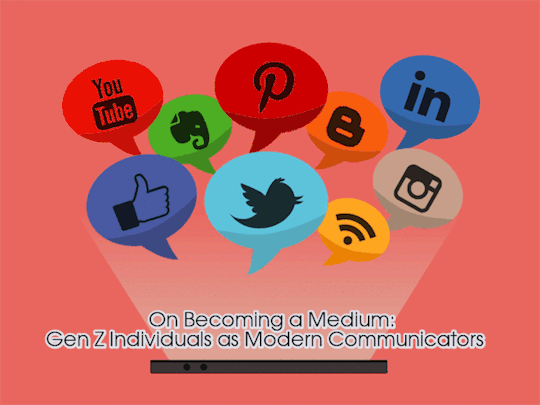
Facebook. Instagram. Twitter. YouTube. Google.
If you are au courant with technology, you may have used these at least once in your life.
The world is changing at a rapid pace. Modifications, transformations, and advancements in all fields are constantly happening around the world. For instance, a few decades ago, the words 'social media' and the 'internet' are still unknown. Nevertheless, these soon played pivotal roles in revolutionizing and modernizing the society that we know of nowadays. People likewise attune and habituate themselves to various changes, hereby adapting to the new and evolved manner of living and communicating with others. The youth in the 21st century is no different. Individuals who were born alongside this expeditious technological and scientific progression are collectively referred to as Gen Z, and they might become the prominent catalysts of change in this modern era.

What year were you born? If you were born after 1997, then you belong to Generation Z (Gen Z).
Generation Z, often shortened as Gen Z or iGeneration, is a demographic cohort for those who were born between the late 1990s and early 2010s, succeeding the Millennials. Despite labeling them to the last letter of the English alphabet, they contrarily have a lot of firsts compared to the previous generations. To name a few, they are considered the pioneering generation of digital natives; they can now reshape the power of technology for the betterment of themselves and others. Moreover, they are also the first generation that was raised in the era of smartphones and the internet. Since Generation Z was born together with the rise of digital technologies, they are more oriented and used to having widely available information anytime anywhere. According to Katie Young of GWI, it has been estimated that Gen Z typically spends around 3 hours and 38 minutes online, 50% higher than an average mobile user. Internet became a fundamental part of today’s society, and it is inherent to Gen Z as well. Their use of the internet on a daily basis has influenced their interactions and patterns of communication with others, both positively and negatively.
Having been accustomed to the technology we have nowadays, it is unquestionable that this generation is considered 'tech-savvy'. Come to think of it, they have not experienced a world without these technologies. They can quickly create documents, presentations, and journals with ease, especially with sufficient internet speed and fine gadgets, like laptops and phones. Additionally, they can share it with their friends, classmates, teachers, or coworkers, making it systematic and efficient. These increase their overall productivity and connectivity with one another, allowing them to multitask on various activities within a short period of time.

More than half of the internet users across the globe are under the age of 24. Additionally, this group of people tends to spend roughly 70 hours a week on their devices (Metafacts, 2018).

Whatever they want to learn, it's readily accessible for them to read and practice. This gears Gen Z towards excellence and discipline, and the earlier these are practiced, the better it is for the maturity and growth of an individual.
The integration of technology into the lives of Generation Z is indeed highly powerful. Before, millennials use SMS and voice calls to connect, and prior to the invention of any telecommunication device, mailing a letter is the only way of communicating with others from afar. Unlike the previous generations, online and digital communication through various social media applications has become the predominant means of communication among Gen Z individuals. It doesn't matter where they are, they are all connected virtually, may it be a virtual conference call or a simple text message. Moreover, as technology made its way to almost everything, collaboration with one another is a crucial aspect that Gen Z individuals would prefer to have. Using popular messaging applications like Messenger and Discord, many of them can keep in touch with one another and easily collaborate on projects, tasks, or any activities.
Over the recent years, communication among people has transformed and changed. Aside from the technological advancements, the way we communicate with others both digitally and personally is now different compared to the previous generations before us. We now commonly see abbreviations and slang in chat messages and comments online. This is often used in casual conversations among friends and family. However, this is also a piece of evidence on how our language adapts and evolves to the changes we create over time.

These are the most common slang and abbreviations used in social media. How many of these have you used?

Despite the rise of messaging apps and virtual calls, face-to-face or personal communication is still the widely preferred form of communication among Gen Z individuals.
With the frequent use of social media and the internet, Gen Z individuals tend to acquire a lot of ideas and information from others. YouTube and TikTok trends are great examples of this. As a result, they become more creative and imaginative when performing or doing something, especially when it strikes their interest. Besides, they can also create content to share with their audience. It may be for entertainment, education, information, and many more.
On top of that, Gen Z is also considered the most diverse generation, as they openly accept and embrace diversity and differences of everyone. No matter where you came from and what you define yourself, you are accepted by this generation. They are generally open-minded to the issues and taboos we commonly avoid to discuss. Moreover, they enthusiastically engage in various activities that support equality and transparency, and actively protest against racism, discrimination, hatred, and corruption which have long plagued our society. These actions, together with the rising influence of social media, may pave the way for the young generation’s voices to resonate around the world, making an impact to the society in the process.
Furthermore, these social media platforms gave them the chance to become more knowledgeable and updated on what is happening locally and internationally. They can be easily informed of any recent events by simply browsing the web or opening any social media app. Social media applications like Facebook and Twitter are the common avenues for this up to date information. However, remember that some of these may be false information, especially if the author or account who posted it is not a verified media outlet. Fact checking and verifying the sources of the articles seen in these platforms are easy and common ways to affirm their legitimacy.
Additionally, these social media applications also allow them to share their thoughts and comments regarding different posts, not to mention that may post something as well, provided that it is credible, verified, and factual. This consequently enriches their vocabulary and skills in writing, speaking, and debating, especially when involved in topics that are deemed controversial. As opposed to the millennials and previous generations, Gen Z is more open to voicing out their opinions, ideas, and thoughts to the world, candidly expressing their freedom of speech to everyone.

They don’t want to continue being a follower, they want to lead. They want to make change.

Twitter and its tagline, "What's happening?", describing the purpose of the social media platform, to connect people and to allow them to share their thoughts with a public audience.
However, it is worth noting that knowing how to navigate the internet and media does not necessarily mean that you are already digitally literate. It is essential that as users of media and spreaders of information, we know what are the proper things to do online. Intently spreading disinformation is just plainly wrong, no matter what the reason is. It does not only cause confusion but also panic and hysteria, especially when that false information is an alarming threat to security and lives. In general, we need to be responsible and disciplined all the time. You may think it is harmless, but it may actually be harmful and damaging to others. Remember, think before you click.
Communication has always been an integral part of being a human. It is the sole reason why we progressed into the civilization that we live in right now. As we reach the digital age of our civilization, the new generation of digital natives, Generation Z, will soon become the contemporary modern communicators of this society. This generation is a vocal and active group that can be a great catalyst for change. Their fervent principles, philosophical beliefs, and prudent judgments may serve importance later on as the world progresses. However, to express these to the world, we need to become a good communicator — an effective and influential communicator. And to do that, we need to be genial, compassionate, and rational to others who wants to become a communicator as well. Let them speak and let them be heard. That way, you too will be heard by others.
Generation Z is a unique generation on its own, and with their power to become a powerful communicator, they can become a medium — a medium with a potential to spark change to the society we live in.

As digital natives and users of social media, we need to be responsible for using the technology given to us. Do not make it a place for false information and hatred. Instead, use it as a platform for various purposes that everyone can benefit, learn, and enjoy.
References:
Seymour, E. (2019). Gen Z: Born to be digital. Retrieved from https://www.voanews.com/a/student-union_gen-z-born-be-digital/6174519.html.
Rapacon, S. (2019). How Gen Z is redefining their world through technology. Retrieved from https://garage.hp.com/us/en/modern-life/generation-z-redefining-the-world.html.
NDMU. (2019). The evolution of communication across generations. Retrieved from https://online.ndm.edu/news/communication/evolution-of-communication/.
Belinne, J. (2019). Gen Z - The communication generation. Retrieved from https://community.naceweb.org/blogs/jamie-belinne/2019/07/23/gen-z-the-communication-generation.
Barcelon, B. (2010). The life of Generation Z. Retrieved from https://teenlife.blogs.pressdemocrat.com/10220/the-life-of-generation-z/.
Image & GIF Sources:
https://www.social-babies.com/post/2017/01/27/5-social-media-platforms-to-explore-in-2017
https://www.thedailybeast.com/generation-z-is-already-bored-by-the-internet
https://uploads0.jovo.to/idea_attachments/840592/homework-dribbble_bigger.gif?1544706789
https://gifer.com/en/gifs/syntax
https://hips.hearstapps.com/hmg-prod.s3.amazonaws.com/images/slang-1624575149.gif?crop=1.00xw:1.00xh;0,0&resize=980:*
https://ar.pinterest.com/pin/99994054211311292/?amp_client_id=CLIENT_ID(_)&mweb_unauth_id={{default.session}}&simplified=true
https://cdn.dribbble.com/users/1308476/screenshots/3438418/beboldforchange_dribbbleloop.gif
https://business.twitter.com/content/dam/business-twitter/basics/twitter-basics-2-tweetideas.gif
https://giphy.com/explore/online-safety
3 notes
·
View notes